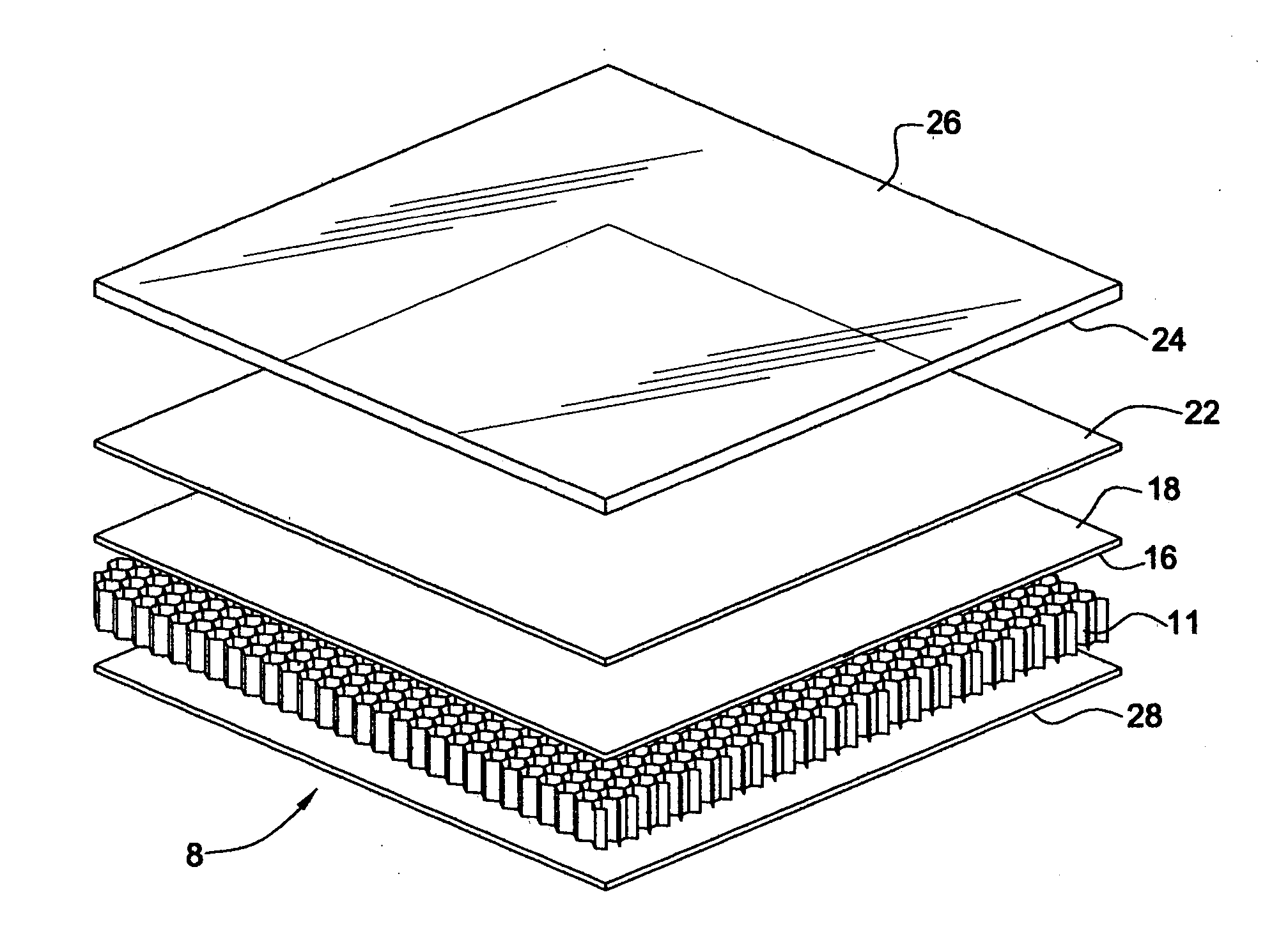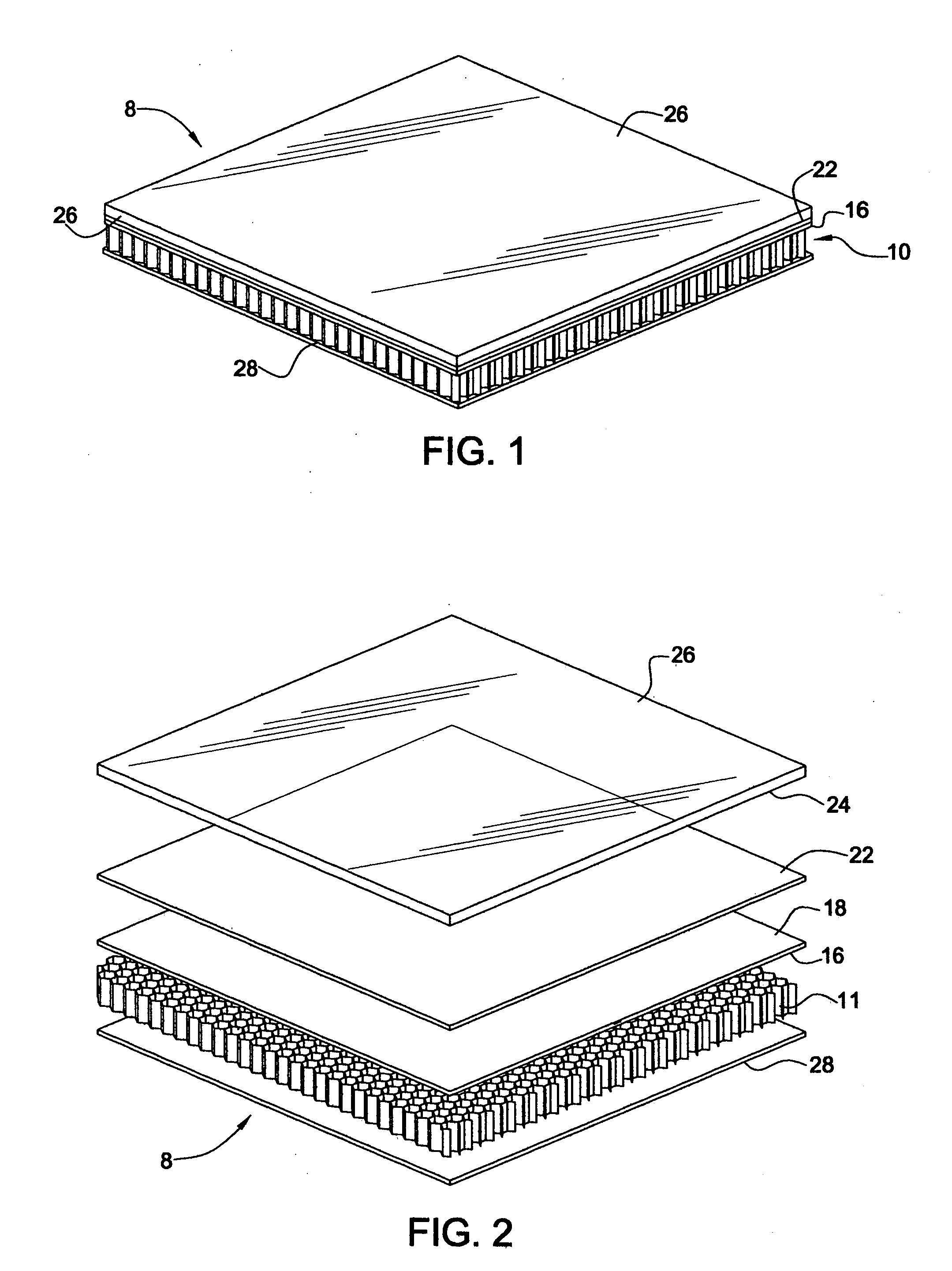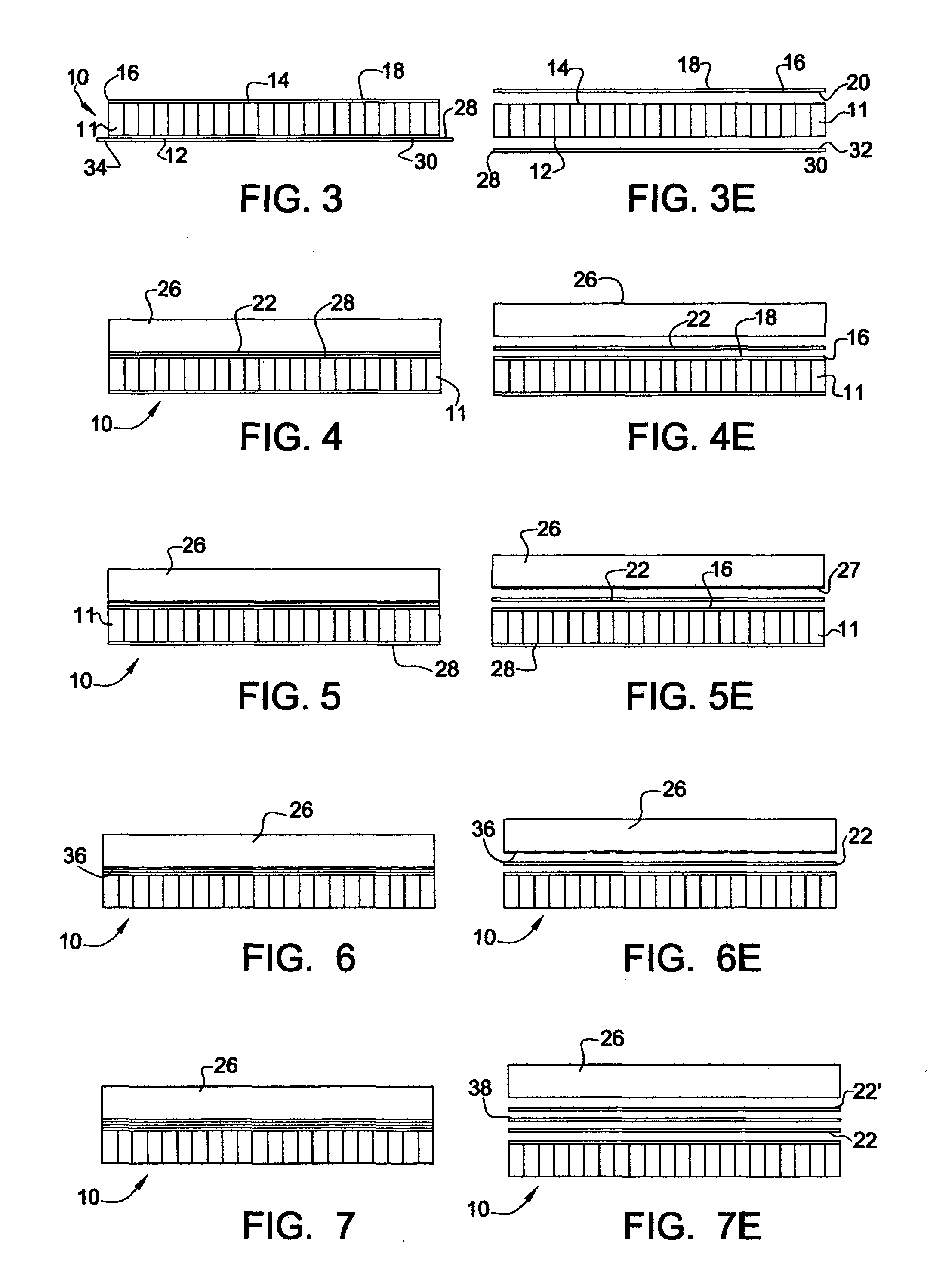Single panel glass structural panel and method of making same
a single-panel glass and structural panel technology, applied in the field of structural building wall panels, can solve the problems of high initial fabrication cost, high cost of high-quality attachment components, and the disadvantage of being both heavy and expensive, and achieve the effect of increasing strength and rigidity
- Summary
- Abstract
- Description
- Claims
- Application Information
AI Technical Summary
Benefits of technology
Problems solved by technology
Method used
Image
Examples
first embodiment
[0062] the invention as illustrated in FIGS. 1 and 2 is formed by providing a composite core panel 10 formed in the previously described manner. An adhesive film layer 22 that has been previously provided with decorative material by printing or other conventional procedures is positioned on the upper surface 18 of outer prepreg 16. The outer prepreg planar glass panel 26 is cut to the same size as the composite core panel and is washed and dried to insure that it is perfectly clean. The glass panel thickness will be in the range of 2 mm to 20 mm with the actual thickness depending upon a variety of variables such as size of the glass panel and environment in which the structural panel of which the glass is a part is to be installed. The glass panel is then positioned on the upper surface of adhesive film 22 with its sides aligned with the sides of adhesive film 22. The resultant structure is then ready for the final bonding process.
[0063] The adhesive film 22 can be either ethylviny...
second embodiment
[0068]FIGS. 5 and 5E illustrate a second embodiment in which the glass panel 26 is provided with a coating of paint 27 which makes the panel 26 have the same color as the paint coating. The final bonding of the components of this embodiment is provided as discussed above and by use of the equipment of FIG. 10 and an oven.
third embodiment
[0069]FIGS. 6 and 6E illustrate a third embodiment in which the glass panel 26 is provided with a patterned or etched glass design 36 on its inner face. The final assembly of this embodiment is effected in the same manner as that of the embodiment of FIGS. 1 and 2 by use of an oven and the equipment illustrated in FIG. 10.
PUM
| Property | Measurement | Unit |
|---|---|---|
| Weight | aaaaa | aaaaa |
| Pressure | aaaaa | aaaaa |
| Adhesivity | aaaaa | aaaaa |
Abstract
Description
Claims
Application Information
 Login to View More
Login to View More - R&D
- Intellectual Property
- Life Sciences
- Materials
- Tech Scout
- Unparalleled Data Quality
- Higher Quality Content
- 60% Fewer Hallucinations
Browse by: Latest US Patents, China's latest patents, Technical Efficacy Thesaurus, Application Domain, Technology Topic, Popular Technical Reports.
© 2025 PatSnap. All rights reserved.Legal|Privacy policy|Modern Slavery Act Transparency Statement|Sitemap|About US| Contact US: help@patsnap.com



